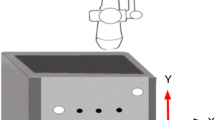Summary.
Summary.
Background:
The aim of image-guided neurosurgery is to accurately project computed tomography (CT) or magnetic resonance imaging (MRI) data into the operative field for defining anatomical landmarks, pathological structures and tumour margins. To achieve this end, different image-guided and computer-assisted, so-called “neuronavigation” systems have been developed in order to offer the neurosurgeon precise spatial information.
Method:
The present study reports on the experience gained with a prototype of the NEN-NeuroGuardTM neuronavigation system (Nicolet Biomedical, Madison, WI, USA). It utilises a pulsed DC electromagnetic field for determining the location in space of surgical instruments to which miniaturised sensors are attached. The system was evaluated in respect to its usefulness, ease of integration into standard neurosurgical procedures, reliability and accuracy.
Findings:
The NEN-system was used with success in 24 intracranial procedures for lesions including both gliomas and cerebral metastases. It allowed real-time display of surgical manoeuvres on pre-operative CT or MR images without a stereotactic frame or a robotic arm. The mean registration error associated with MRI was 1.3 mm (RMS error) and 1.5 mm (RMS error) with CT-data. The average intra-operative target-localising error was 3.2 mm (± 1.5 mm SD). Thus, the equipment was of great help in planning and performing skin incisions and craniotomies as well as in reaching deep-seated lesions with a minimum of trauma.
Interpretation:
The NEN-NeuroGuardTM system is a very user-friendly and reliable tool for image-guided neurosurgery. It does not have the limitations of a conventional stereotactic frame. Due to its electromagnetic technology it avoids the “line-of-sight” problem often met by optical navigation systems since its sensors remain active even when situated deep inside the skull or hidden, for example, by drapes or by the surgical microscope.
Similar content being viewed by others
Author information
Authors and Affiliations
Rights and permissions
About this article
Cite this article
Suess, O., Kombos, T., Kurth, R. et al. Intracranial Image-Guided Neurosurgery: Experience with a new Electromagnetic Navigation System. Acta Neurochir (Wien) 143, 927–934 (2001). https://doi.org/10.1007/s007010170023
Issue Date:
DOI: https://doi.org/10.1007/s007010170023




